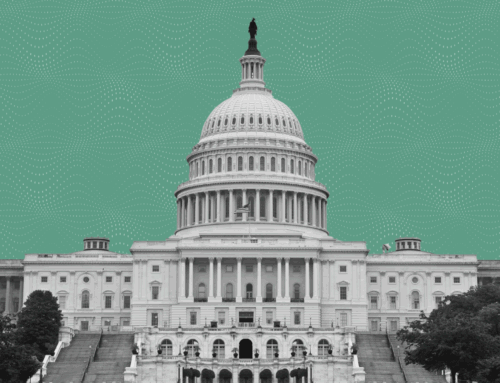EIG contact: Amelia Sandhovel | [email protected]
Washington, D.C. – The Economic Innovation Group (EIG) applauds the introduction of bipartisan, bicameral legislation to boost retirement savings and financial security for low- and moderate-income workers. Introduced today by Senators John Hickenlooper (D-CO) and Thom Tillis (R-NC), and Representatives Terri Sewell (D-AL-7) and Lloyd Smucker (R-PA-11), the Retirement Savings for Americans Act would fill the market gap for millions of workers who currently lack access to an employer-sponsored retirement plan and incentivize low- and moderate-income workers to build a nest egg throughout their careers.
“Far too many Americans are unprepared for retirement. The Retirement Savings for Americans Act would tackle serious gaps in the U.S. retirement system that have hindered millions of workers from saving for a more certain and secure future,” said EIG President and CEO John Lettieri. “By incorporating a range of proven features, this innovative legislation would greatly expand market access to high quality retirement plans and target savings incentives to workers who need them most. The result would be a healthier retirement system, a more secure workforce, and a stronger economy to the benefit of all Americans. EIG is proud to have worked closely with Senators Hickenlooper and Tillis and Representatives Sewell and Smucker on this important legislation, and we applaud them for their bipartisan dedication to empowering American workers.”
The legislation closely follows the recommendations of EIG’s Inclusive Wealth-Building Initiative, which launched last year with a white paper by economists Teresa Ghilarducci and Kevin Hassett. In it, the authors outline an idea to significantly expand retirement savings for millions of low- and moderate-income Americans through a new program modeled after the highly successful federal Thrift Savings Plan (TSP), which has helped millions of federal workers and members of the military save for retirement.
“The Retirement Savings for Americans Act would provide millions of hard-working Americans with a direct stake in the growth and prosperity of our economy,” said Hassett, Distinguished Visiting Fellow at the Hoover Institution and former Chairman of the White House Council of Economic Advisers. “This legislation represents a unique opportunity to fix major shortcomings in the U.S. retirement system and build bottom-up wealth in a manner that rewards work and strengthens faith in the basic fairness of our economic system.”
“Too many Americans are struggling to meet their savings goals and secure a comfortable standard of living in retirement,” said Professor Ghilarducci, a labor economist at the New School and leading expert on retirement security. “The Retirement Savings for Americans Act takes critical steps to address gaps in federal retirement policy and ensure that low- and moderate-income workers are equipped to build a nest egg for themselves and for future generations.”
The Retirement Savings for Americans Act would establish a retirement savings program to address the lack of market access and savings incentives that hinder millions of low- and moderate-income Americans from building a retirement nest egg for themselves and their families. Key provisions of the program would include:
- Eligibility and Auto Enrollment: Full- and part-time workers who lack access to a workplace retirement plan—including independent and gig workers—would be eligible for the program and automatically enrolled at three percent of their income.
- Matching Contribution: Low- and moderate-income workers would be eligible for a matching contribution up to five percent of their income, including a one percent automatic contribution, deposited into their retirement account as they earn it via a refundable federal tax credit.
- Portability: Accounts would remain attached to workers throughout their lifetimes. Workers could stop and start contributions as they wish, or as their eligibility requires.
- Ownership of Assets: The accounts would be the property of the worker and their assets could be passed down to future generations.
- Investment Options: Participants would be given a menu of simple, low-fee investment options from which to choose. At retirement, workers could select an annuity option that provides a guaranteed lifetime income.
Retirement accounts are the largest source of aggregate wealth for American households. However, participation in the retirement system varies greatly, with millions of Americans not saving anything for retirement. In fact, a quarter of non-retired adults have no retirement savings, and half of households risk taking a cut to their standard of living in retirement. Most workers in the bottom 50 percent of income lack access to an employer-sponsored retirement account. Making matters worse, existing federal tax benefits to incentivize retirement savings disproportionately benefit higher-earning workers, leaving low- and middle-income working Americans struggling to build long-term wealth and ensure a comfortable retirement.
A 2022 EIG national survey found that a large, bipartisan majority of voters (81 percent) are concerned about retirement security, while less than half are confident that the next generation will be better off financially. In June, the U.S. Conference of Mayors adopted a bipartisan resolution calling on federal policymakers to consider adopting a TSP-type program for private-sector workers who lack a retirement plan at work.
About the Economic Innovation Group (EIG)
The Economic Innovation Group (EIG) is a bipartisan public policy organization dedicated to forging a more dynamic and inclusive American economy. Headquartered in Washington, DC, EIG produces nationally-recognized research and works with policymakers to develop ideas that empower workers, entrepreneurs, and communities.
###






